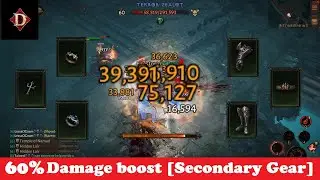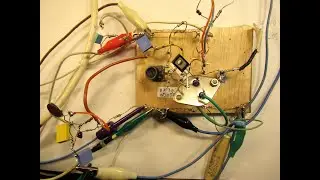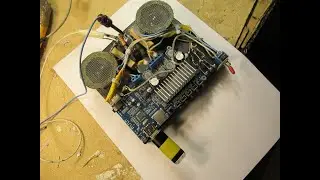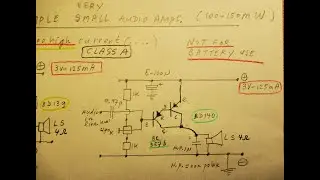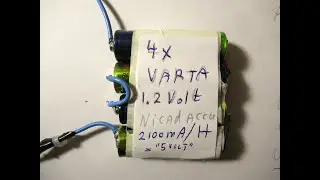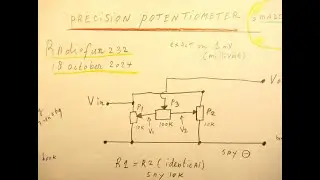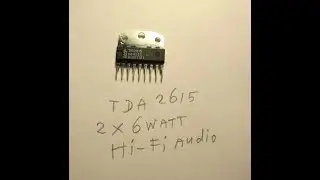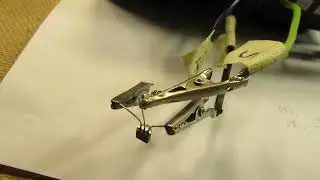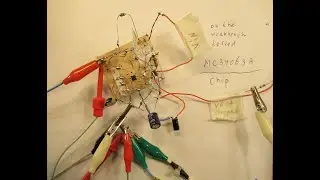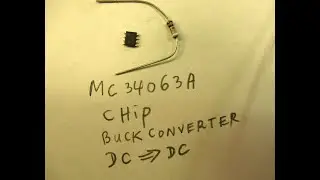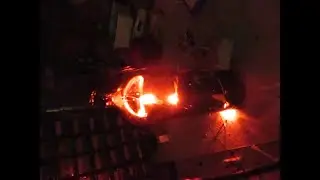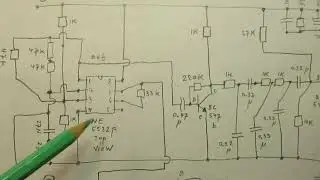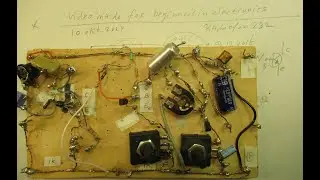Making tiny currents and electron flow visible with a Wheatstone bridge demo & schematic
How to make electrons flowing in a wire visible? Or very tiny resistance differents in a wire ?
A fundamental circuit is showed here.
That is possible with this circuit.
The demo shows: related to the higher resistance that a steel wire of (a few) decimeters gives, when it is heated with (say) a gas lighter. Heating between say 20 degrees Celsius up to 200 degree Celsius or more.
The circuit to make that visible is showed here and has some critical properties.
The piece of iron wire of say 30 cm length is heated up (wound into a spiral) with a gas lighter while connected to a 3 transistor NPN stage (base transistor 1) .
The latter (final) transistor of that 3 NPN transistor stage bridges the 4,7 Ohm resistor in the Wheatstone Bridge (Collector-Emitter, watch the video).
So the “voltage divider” that drives the 3 stage Darlington has extremely low resistance values to the base of the first transistor: a piece of copperwire to the base (from +) and also to that same base of transistor 1 that iron wire, connected to -, minus.
Both extremely low resistance wires form a “voltage divider” (? Or a current divider? I don't know) at the node, that node is the basis of transistor 1, the first transistor in the 3 stage Darlington.
So the “current amplifier” (thus between arrows) consists of 3 x the BC 547 b NPN Silicon transistor, each with a current amplification of 300 x.
Does that mean that we have here a 300 x 300 x 300 current amplification? No.
That depends on the supply voltage, here it is so extremely low (0,00X Volt at say 300 mA or somewhat more) that we are in the “electrons range”. Current (Ampère) = amount of electrons flowing during a certain time.
Test: I removed the 3 transistor stage Darlington and connected the iron wire directly into the Wheatstone bridge. In that situation the circuit did NOT work.
So the 3 stage Darlington (you can also use a 2 stage Darlington, 2 x BC 547 B, I tested that) play a good role in detecting the tiny current in the iron wire when that wire is heated.
We are working with this circuit on extremely low voltages and relatively high currents (say in the 300-500 mA range) and the physics laws about counting electrons are (of course) valid.
Study that issue (current properties) for more insight, related to the barrier voltage of NPN Silicon transistors.
In this circuit they act (in my opinion) in a somewhat strange way, not obeying to that barrier voltage, but of course they will obey to electronic laws, and my opinion is (having seen this circuit) to the way electrons move.
Whatever: there is a so called “coulometer”, counting electrons and their charge during time. It tells/counts electrons and the charge that they build up on a certain location. Used in laboratory and chemistry to (say) point out the “end” of a chemistry reaction (say: in a fluid, ionic).
All the videos hat I have published on You Tube can be found via my Channel Trailer: Link is
• Radiofun232 on YouTube. Updated month...
In thematic order you can find these video’s under the “comments” section.
Important: to find all the links to the (+/-700) video’s on my YT Channel, select, in the comments section, “NEWEST FIRST”
My books about electronics are available via the website from “Lulu”, search for author “Ko Tilman” there.
https://www.lulu.com/shop/search.ep?k...
There is an important video via which you can buy a document where I give links to many of my video’s, published between 2010 and 2018.
Link is: • Radiofun232: Links to my You Tube vid...
My books are also available via Barnes and Noble and via Amazon.
Regarding all my video’s: I constantly keep them actual, so the original video’s with the most recent information are always on YouTube. That is the source, and search there. When my video’s are reproduced or re-edited on other websites/channels you can not (!) be sure about the original content (=really working electronics with real properties for a purpose) and important adaptations to the circuits.
Be aware of that, I saw on the internet my circuits reproduced in a poor or not proper way.
I also found that people probably republish my circuits under phantasy names and/or with phantasy properties. I take distance from all these fake claims; I cannot help that it happens, sorry. Upload 11 december 2019.



